Texts (2010-2007)(Edit)
————► BIBLIOGRAPHY/IE : — ► List(e) ————► PUBLICATIONS/PUBLISHINGS : — ► Text(e)s (2014-2011) — ► Text(e)s (2010-2007) — ► Text(e)s (2006-1990) —
2010 |
|||
Joy J. (2010). What NMSAT says about Sonification |
lire / read |
In AI & Society : Knowledge, Culture and Communication, Proceedings of Locus Sonus Symposium : « Sonification (What, Where, How, Why) », Guest editor Locus Sonus, Volume 27:2, (pp. 233-244), May 2012. London : Springer (Pub.). ISSN 0951-5666 | |
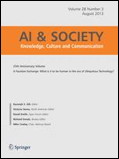 This article presents a sample of references issuing directly from the existing NMSAT database. The method employed – that of systematically probing the database - reveals forms of sonification but also hypothetical premises of sonification, covering the period from ancient times to the beginning of the twentieth century. The following are some of the categories of sonification that have emerged as a result of this search: Natural phenomenon & meteorology to sound (autophones); Image to sound; Text & communication to sound; Human & machine activities to sound (auditing); Localisation to sound (sonar); Architecture & geometry & abstract proportions to sound (scalization, transcription, & spatialization); Energy to sound; Human body to sound; Distance to sound (distance listening); Movement to sound (holophony, kynophony); Interpreted observations to sound (naturalist music, transpositions & analogies, paraphrasing). The search also uncovered other principals and practices in the vicinity of sonification including: audification, auditing, auscultation, auralization, soniculation, transduction, mapping, earcons, auditory icons, sympathy, echometry, etc. This article presents a sample of references issuing directly from the existing NMSAT database. The method employed – that of systematically probing the database - reveals forms of sonification but also hypothetical premises of sonification, covering the period from ancient times to the beginning of the twentieth century. The following are some of the categories of sonification that have emerged as a result of this search: Natural phenomenon & meteorology to sound (autophones); Image to sound; Text & communication to sound; Human & machine activities to sound (auditing); Localisation to sound (sonar); Architecture & geometry & abstract proportions to sound (scalization, transcription, & spatialization); Energy to sound; Human body to sound; Distance to sound (distance listening); Movement to sound (holophony, kynophony); Interpreted observations to sound (naturalist music, transpositions & analogies, paraphrasing). The search also uncovered other principals and practices in the vicinity of sonification including: audification, auditing, auscultation, auralization, soniculation, transduction, mapping, earcons, auditory icons, sympathy, echometry, etc.
[ ... → lire l'article — continue reading ... ] [ ... → lire le pdf en version anglaise — pdf (English version) ... ] [ ... → télécharger le pdf en version anglaise — pdf download (English version) ... ] |
|||
Joy J. (2010). Extended Music - Out in the Open |
lire / read |
French, English and Chinese versions. In « Around », catalog of the sound festival, (pp. 104-149), Transl. by Celine Cruickshanks. Edited by Yang Yeung, Soundpocket, Hong Kong Arts Development Council, Hong Kong (HK), 2010. ISBN 978-988-19480-1-4 | |
Les Œuvres-Auditoriums - Une musique idiomatique pour les espaces et environnements en extension (musique en réseau, musique en "plein air", etc.) associant instruments, dispositifs, appareils, circuits et auditoriums et proposant la fabrication d'écoutes en temps réel. — Écouter est proposer une situation indéterminée, à évaluer ensemble, qui fait circuit, relation entre nous, au travers d’intrications d’étendues sonores que nous traversons ; L’écoute est une attention critique, c’est-à-dire qui révèle les alentours, les étendues et les durées, et qui propose un ralentissement et une lenteur de nos traversées d’espaces et des moments : l’attention aux reliefs momentanés de nos temporalités, à la fois individuelles et collectives ; Lorsqu’au lieu des murs construits de nos salles, nous disposons d’autres lieux, comme ceux non prescrits, ou comme ceux déjà présents dans nos environnements, nous proposons l’écoute d’autres étendues et d’autres modulations d’étendues sonores, semblant, en premier lieu, excentriques et inhabituelles à des écoutes propices ; Pourtant, une seconde dimension des étendues se révèle, celle d’étendre la musique à d’autres lieux et acoustiques par d’autres modalités de propagation sonore. 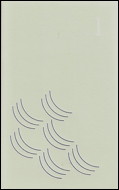 Musical works as Auditoriums - What are the idioms of a music for expanded spaces & environments (networked music, "out in the open" music, etc.) that combine instruments, systems, relays, circuits and auditoria, and that offer a realtime manufacturing of listenings. — Listening refers to offering an undetermined situation, to be assessed together, and such situation creates a circuit, a relationship among us, through the intricate soundscape crossed by us; Listening indicates a critical attention, in other words an attention that reveals the surroundings, the soundscape and durations and suggests a slow down and slowness of our crossing spaces and moments: the attention to the temporary patterns of our time-passing, both individual and collective; When, instead of the built walls of our auditoriums, we use other locations, such as non-prescribed ones or those already existing in our environments, thus we suggest the listening of other spaces and expanses and other variations of the soundscape which, at first, seem too eccentric and unusual for conducive listening; However, then a second dimension of the soundscape appears, extending the music to other locations and acoustics through other methods of acoustic propagation. Musical works as Auditoriums - What are the idioms of a music for expanded spaces & environments (networked music, "out in the open" music, etc.) that combine instruments, systems, relays, circuits and auditoria, and that offer a realtime manufacturing of listenings. — Listening refers to offering an undetermined situation, to be assessed together, and such situation creates a circuit, a relationship among us, through the intricate soundscape crossed by us; Listening indicates a critical attention, in other words an attention that reveals the surroundings, the soundscape and durations and suggests a slow down and slowness of our crossing spaces and moments: the attention to the temporary patterns of our time-passing, both individual and collective; When, instead of the built walls of our auditoriums, we use other locations, such as non-prescribed ones or those already existing in our environments, thus we suggest the listening of other spaces and expanses and other variations of the soundscape which, at first, seem too eccentric and unusual for conducive listening; However, then a second dimension of the soundscape appears, extending the music to other locations and acoustics through other methods of acoustic propagation.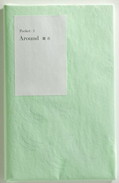 A review : « There has been a surprising resurgence of interest in sound art in Hong Kong over the past few years, spurred by a combination of factors from a strong research program in certain university departments to the fact that the event-based form of many sound exhibitions suits the transient cycle of artists circulating through the city. (...) Around sound emphasizes not sound art as we know it but rather “sound-in-art and sound-as-art,” or “listening-to, listening-before, and listening-after,” and this volume likewise contains a range of ideas in at least four languages, all packaged in a flawlessly translated, edited, designed, and printed container. (...) In a lengthy text from Jerome Joy, himself a performer in the festival, we find a more analytical text that offers a healthy reprieve in its historical and theoretical contextualization of multiple performance events, while Felix Hess similarly offers a narrative of his own arrival at sound practice through science, theory, and personal experience. (...) » (Robin Peckham. Posted on Friday, December 3, 2010, at 19:51) A review : « There has been a surprising resurgence of interest in sound art in Hong Kong over the past few years, spurred by a combination of factors from a strong research program in certain university departments to the fact that the event-based form of many sound exhibitions suits the transient cycle of artists circulating through the city. (...) Around sound emphasizes not sound art as we know it but rather “sound-in-art and sound-as-art,” or “listening-to, listening-before, and listening-after,” and this volume likewise contains a range of ideas in at least four languages, all packaged in a flawlessly translated, edited, designed, and printed container. (...) In a lengthy text from Jerome Joy, himself a performer in the festival, we find a more analytical text that offers a healthy reprieve in its historical and theoretical contextualization of multiple performance events, while Felix Hess similarly offers a narrative of his own arrival at sound practice through science, theory, and personal experience. (...) » (Robin Peckham. Posted on Friday, December 3, 2010, at 19:51)
[ ... → lire l'article — continue reading ... ] [ ... → lire le pdf en version anglaise — pdf (English version) ... ] [ ... → télécharger le pdf en version anglaise — pdf download (English version) ... ] [ ... → lire le pdf — pdf (French version) ... ] [ ... → télécharger le pdf — pdf download (French version) ... ] [ ... → lire le pdf en version chinoise — pdf (Chinese version) ... ] [ ... → télécharger le pdf en version chinoise — pdf download (Chinese version) ... ] |
|||
Joy J. (2010). Une Époque Circuitée
|
lire / read |
In Revue Intermédialités - Histoire et Théorie des Arts, Lettres et des Techniques - April, 2010, No. 13 - « Programmer », (pp. 57-76), CRI, Centre de Recherche sur L'Intermédialité, Université de Montréal (QC), 2010. ISBN-13 978-2-923144-12-2 | |
Les Œuvres-Auditoriums - Une musique idiomatique pour les espaces et environnements en extension (musique en réseau, musique en "plein air", etc.) associant instruments, dispositifs, appareils, circuits et auditoriums et proposant la fabrication d'écoutes en temps réel. — Écouter est proposer une situation indéterminée, à évaluer ensemble, qui fait circuit, relation entre nous, au travers d’intrications d’étendues sonores que nous traversons ; L’écoute est une attention critique, c’est-à-dire qui révèle les alentours, les étendues et les durées, et qui propose un ralentissement et une lenteur de nos traversées d’espaces et des moments : l’attention aux reliefs momentanés de nos temporalités, à la fois individuelles et collectives ; Lorsqu’au lieu des murs construits de nos salles, nous disposons d’autres lieux, comme ceux non prescrits, ou comme ceux déjà présents dans nos environnements, nous proposons l’écoute d’autres étendues et d’autres modulations d’étendues sonores, semblant, en premier lieu, excentriques et inhabituelles à des écoutes propices ; Pourtant, une seconde dimension des étendues se révèle, celle d’étendre la musique à d’autres lieux et acoustiques par d’autres modalités de propagation sonore. 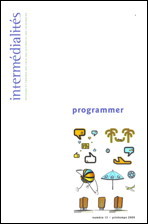 Musical works as Auditoriums - What are the idioms of a music for expanded spaces & environments (networked music, "out in the open" music, etc.) that combine instruments, systems, relays, circuits and auditoria, and that offer a realtime manufacturing of listenings. — Listening refers to offering an undetermined situation, to be assessed together, and such situation creates a circuit, a relationship among us, through the intricate soundscape crossed by us; Listening indicates a critical attention, in other words an attention that reveals the surroundings, the soundscape and durations and suggests a slow down and slowness of our crossing spaces and moments: the attention to the temporary patterns of our time-passing, both individual and collective; When, instead of the built walls of our auditoriums, we use other locations, such as non-prescribed ones or those already existing in our environments, thus we suggest the listening of other spaces and expanses and other variations of the soundscape which, at first, seem too eccentric and unusual for conducive listening; However, then a second dimension of the soundscape appears, extending the music to other locations and acoustics through other methods of acoustic propagation. Musical works as Auditoriums - What are the idioms of a music for expanded spaces & environments (networked music, "out in the open" music, etc.) that combine instruments, systems, relays, circuits and auditoria, and that offer a realtime manufacturing of listenings. — Listening refers to offering an undetermined situation, to be assessed together, and such situation creates a circuit, a relationship among us, through the intricate soundscape crossed by us; Listening indicates a critical attention, in other words an attention that reveals the surroundings, the soundscape and durations and suggests a slow down and slowness of our crossing spaces and moments: the attention to the temporary patterns of our time-passing, both individual and collective; When, instead of the built walls of our auditoriums, we use other locations, such as non-prescribed ones or those already existing in our environments, thus we suggest the listening of other spaces and expanses and other variations of the soundscape which, at first, seem too eccentric and unusual for conducive listening; However, then a second dimension of the soundscape appears, extending the music to other locations and acoustics through other methods of acoustic propagation.
[ ... → lire l'article — continue reading ... ] [ ... → lire le pdf — pdf (French version) ... ] [ ... → télécharger le pdf — pdf download (French version) ... ] [ ... → lire le pdf — pdf (facsimile French version) ... ] [ ... → télécharger le pdf — pdf download (facsimile French version) ... ] [ ... → télécharger le pdf — pdf download (facsimile French version - site erudit.org) ... ] [ ... → télécharger le pdf — pdf download (page reference revue) ... ] |
|||
2009 |
|||
Joy J. (2009). Chantal, de Luc Ferrari
|
lire / read |
In livret du cd « Luc Ferrari – Chantal ou le portrait d'une villageoise », publié par Jérôme Joy et Brunhild Ferrari-Meyer, (pp. 5-8), label Ohm Avatar, Québec, 2009. OHM 051 | |
Lorsque Luc m'a envoyé la bande magnétique de "Chantal", nous étions en 1985 ou 86 je crois, je n'avais jusqu'alors jamais écouté cette œuvre. Mon intérêt était croissant tant les rares commentaires que j'avais lus à son propos soulignaient le caractère singulier et unique d'une œuvre inclassable voire dérangeante. Mon travail m'amenait depuis quelque temps à déborder la microphonie et la prise de son électroacoustique, pour des phonographies "inventées" semblables à des aventures live où le micro était laissé ouvert malgré tout et dans lesquels ma présence prenait parfois l'allure de performances improvisées avec les contextes. Le principe d'œuvre m'intéressait peu en tant que tel et j'avais trouvé dans le travail de Luc des clins d'oeil et des risques que je comprenais parfaitement; d'où ma demande que je lui avais faite de m'envoyer cette œuvre inédite, afin de stimuler ces risques permanents dont nous avons besoin. Je cherchais des étonnements.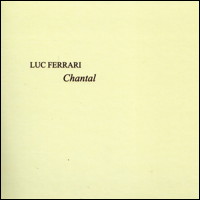 In cd booklet « Luc Ferrari – Chantal ou le portrait d'une villageoise » (Chantal or the portrait of a village dweller), published by Jérôme Joy and Brunhild Ferrari-Meyer, (pp. 5-8), Ohm Avatar cd label, Quebec (CAN), 2009. OHM 051. In cd booklet « Luc Ferrari – Chantal ou le portrait d'une villageoise » (Chantal or the portrait of a village dweller), published by Jérôme Joy and Brunhild Ferrari-Meyer, (pp. 5-8), Ohm Avatar cd label, Quebec (CAN), 2009. OHM 051.Luc has always been deeply interested in society, in people one can see in the metro, in the street, in popular places. We can be aware of this interest in the majority of his works, but in addition he made several pure sound reports, in particular in Algeria. One beautiful sunny day of 1976 we spent the after-noon in the garden of friends. We were lying in the grass with our map of France and wondered where to spend some weeks in summer. As Pierre was sprinkling his young trees Luc asked him to send one water drop on our map. It fell on Tuchan we never had heard about before, so we decided immediately to go there with the wish to explore this small village in the Corbières, a vine country in the department of Aude in the southwest of France. "Chantal" is a forty-minute composition by musique concrète pioneer Luc Ferrari, based on recordings made in the summer of 1976 in the South Western French village Tuchan. Ferrari interviewed a number of villagers whilst making the piece, though the end result is a series of dialogues with a resident named Chantal, who according to Luc's wife, Brunhild Ferrari, talks about "her life, her troubles, her desires". [ ... → page cds — cds page ... ] [ ... → lire le pdf — pdf (French version) ... ] [ ... → télécharger le pdf — pdf download (French version) ... ] |
|||
Joy J. (2009). http://joy.nujus.net/ http://jeromejoy.org/ |
lire / read |
In « WJ-Spots #1 – 15 ans de création artistique sur Internet », (pp. 60-61), revue MCD Musiques & Cultures Digitales, hors série #03, septembre 2009.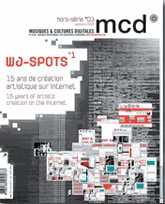 | |
| Après avoir lancé un travail de performance au tout début des années 80, puis de prises de son performées, de composition instrumentale et électronique à partir de sons détournés et bruités et de constructions d’immersions sonores, j’ai développé des œuvres programmées qui oscillent entre composition live, spatialisation sonore répartie et ambiances électroniques et électroacoustiques. C’est ainsi que j’ai pu aborder l’Internet en 1995 en considérant le studio comme un studio "étendu", initialement constitué de machines (samplers, synthétiseurs, séquenceurs, logiciels de programmation) reliées et interactant entre elles, complété par des machines en relais et distantes : les serveurs et les ordinateurs des internautes. French and English versions. In « WJ-Spots #1 – 15 years of Net-Art in France », (pp. 60-61), MCD Music and Digital Culture, special issue #03, sept. 2009. — After the performance work I did in the beginning of the 80’s, followed by work with performance sound recordings, instrumental and electronic composition based on noise sound and sound immersions, I created programmed art pieces on the brink of live composition, distributed sound spatialization and electronic and electroacoustic ambiance. That’s how I came into contact with the Internet in 1995, considering it as an “extension” of the studio, made up of machines (samplers, synthesizers, sequencers, programming software) which are connected to, and interact, with each other; and supplemented by distant relay machines: servers and surfers’ computers. [ ... → page cds — cds page ... ] [ ... → lire le pdf — pdf (French & English versions) ... ] [ ... → télécharger le pdf — pdf download (French & English versions) ... ] |
|||
Joy J. (2009). Une Journée Sonore
|
lire / read |
Plaquette de présentation de l'événement, Médiathèque de Mouans-Sartoux, janvier 2009. Presentation text for a music and sound event. Media Library of Mouans-Sartoux (F), Jan. 2009. | |
| Les journées sonores sont rares. A vrai dire, nous les connaissons de moins en moins; il s'agit de moments consacrés à l'écoute, autour de soi, dans le quotidien, dans le laisser-(ad)venir de l'imprévu et du non-intentionnel. Ceci requiert une attention toute particulière, voire nonchalante, de ces ambiances qui nous entourent, de ces moments suspendus qui résistent à la célérité de notre vie hyper-mesurée. Un "écouteur" est un résistant et l'écoute un acte de liberté. Dans mon travail de compositeur, l'interrogation du "réel" est au centre de mes explorations, que cela soit dans les captations d'enregistrement dans le quotidien ou dans l'utilisation des dispositifs en direct (live) liés à l'entrelacement entre composition et improvisation augmentés par nos techniques d'aujourd'hui, ou bien encore dans les déplacements des situations de concert dans les espaces "au-dehors", vers les auditeurs et le quotidien. Il y va de la construction d'expériences, ici d'écoute, et de mémoires communes que la musique cristallise et condense. La musique est ainsi, au travers de cette journée sonore, un partage d'expériences du monde et l'écoute, la marge de liberté de s'y interpréter. Si notre temps, nos temporalités et nos horaires, étaient cadencés par nos écoutes, à l'image de "ragas" ou de "chants des pistes", nous serions continuellement des promeneurs. | |||
Gauthier M., Joy J. (2009). No Beginning No End. Jérôme Joy : Modes d'emploi
|
lire / read |
Commandé par la revue Intermédialités, CRI Université de Montréal (QC). (15p). (inédit / unpublished) | |
| Le travail compositionnel de Jérôme Joy est « plurimultiforme » en ceci qu’il combine en un tout indifférencié instruments musicaux traditionnels ou électroniques, applications informatiques et une diversité de pratiques sonores plurielles telles que musique de sons fixés, improvisation, performance, modélisations informatiques, réseautages, etc. Ce métissage particulier génère des objets perceptifs imprévisibles parce que toujours en mouvance. Cet article tente de mettre en relief, en les considérant sous différents angles, certaines des résultantes que cette démarche engendre en termes formels, esthétiques et esthésiques. De fait, ce type de pratique interroge directement l’idée même de ce qu’est une « œuvre d’art» telle que conçue traditionnellement et peut-être surtout, la perception qui s’y rattache. The compositional approach of Jérôme Joy is “pluri- multiform” in that it combines in an undifferentiated whole musical acoustic or electronic instruments, computer applications and a diversity of plurial sound practices such as electroacoustic music (aka concrete music), improvisation, performance, computer modelings, networkings, etc.. This particular interbreeding generates perceptive unforeseeable objects in constant mobility. This article tries to highlight, by considering them under various angles, some of the formal, esthetic and esthesic resultants generated by these process. In fact, this kind of practice questions directly the idea involved by what is a “work of art” as it is designed traditionally and perhaps especially, the perception that is attached to it. [ ... → lire l'article — continue reading ... ] [ ... → lire le pdf — pdf (French version) ... ] [ ... → télécharger le pdf — pdf download (French version) ... ] |
|||
Joy J., Sinclair P. (2009). Networked Music & Soundart Timeline (NMSAT): A Panoramic View of Practices and Techniques Related to Sound Transmission and Distance Listening |
lire / read |
In Contemporary Music Review, « Network Performance », Vol. 28, Nos 4/5, (pp. 351-361), Taylor & Francis Group, Oxford: Routledge (UK), 2009. ISSN 0749-4467 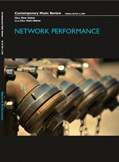 | |
| Initié en 2008, le « Networked Music and SoundArt Timeline » (NMSAT) est une veille documentaire sur l’historique de l’art audio et de la musique en réseau. À partir de cette première version 1.0 présentée ici, cet historique est proposé comme une ressource qui sera mise à jour en continu sur la base d'un cadre contributif de recherche pour aboutir à la version 2.0 qui sera rendue publique. Le Timeline est maintenu par une équipe : le NMSAT development board (collège de développement du NMSAT) constitué principalement de chercheurs et d’artistes. Ce collège a deux objectifs : 1) amender et compléter la base de données existante comprenant à ce jour plus de 2000 entrées et environ 550 articles de référence, 2) encadrer le développement technique et éditorial du projet en ligne destiné à être publié et dont l’accès sera public. Cette présentation décrit l’état actuel du Timeline et la manière selon laquelle il a été structuré. Elle propose également les objectifs de son évolution vers une base de données en tant que ressource ouverte, accessible au travers d’une variété d’interfaces spécialisées. Le NMSAT fait partie des programmes de recherche de Locus Sonus (Networked Sonic Spaces et Field Spatialization), et vise à donner un cadre historique à la recherche artistique practice-led et à l’exploration des technologies et des problématiques liées à ces pratiques en réseau, notamment au travers des les réalisations artistiques menées par le laboratoire Locus Sonus (Locustream, New Atlantis et Wimicam). Le NMSAT est nourri à la fois par une veille continuelle sur les aspects historiques et contemporains de ces pratiques et de leurs contextes, et par des objectifs de développement d’études à partir du corpus documentaire. In 2008, Jérôme Joy initiated the ‘Networked Music & SoundArt Timeline’ (NMSAT) — a monitor on the history of networked music and sound. The Timeline is maintained by the NMSAT Development Committee, consisting primarily of researchers and artists from partner institutions. The team is complemented by a pool of authors and editors contributing to Locus Sonus’s projects (such as, for instance, members of WLP – World Listening Project) and individuals who are part of other collaborative projects. The Committee has two major objectives: to amend and expand the existing database comprised currently of more than 2,000 entries and approximately 550 reference articles (NMSAT v.1.090319, March 2009); and to support the online technical and editorial development of the project. This article describes the current state of the timeline and the way in which it has been structured, as well as its evolution towards an open resource database accessible through a variety of specialized interfaces. NMSAT is part of the Locus Sonus research program and provides an essential historical backbone to practice-based artistic research and the exploration of developing technologies. [ ... → lire l'article — continue reading ... ] [ ... → lire le pdf en version anglaise — pdf (English version) ... ] [ ... → télécharger le pdf en version anglaise — pdf download (English version) ... ] [ ... → lire le pdf en version française — pdf (French version) ... ] [ ... → télécharger le pdf en version française — pdf download (French version) ... ] |
|||
Joy J. (2009). Networked Music & Soundart Timeline (NMSAT) — Excerpts of Part One: Ancient and Modern History, Anticipatory Literature, and Technical Developments References |
lire / read |
In revue Contemporary Music Review, « Network Performance », Vol. 28, Nos 4/5, (pp. 449-490), Taylor & Francis Group, Oxford: Routledge (UK), 2009. ISSN 0749-4467  | |
| This article presents a sample of references present in the existing Networked Music & SoundArt Timeline (NMSAT) database. The NMSAT is a research project led and initiated in 2008 by Jérôme Joy within the Locus Sonus lab. It is conceived as a monitor and a pool of informations on history of networked music and sound (Joy & Sinclair, 2009). It aims to provide an overview of practices and techniques in the realm of networked music and networked sonic performance from ancient history to the present (2008), related to sound transmission and distance listening. It consists of a collection of references from various online and bibliographical documents, articles, workshop notes and so on. The NMSAT offers a valuable resource made available to actors in the artistic and scientific spheres. Because it is not possible to summarise in one article the large spectrum of references from all periods, we decided to present a sample related to Part 1 of the database (Part 2 concerns references of networked music and soundart, technological developments and contemporary history; Part 3 contains a bibliography of reference papers). This sample lists a selection of references covering the period from the sixteenth century to the middle of the nineteenth century, just before the major developments of the telephone by Alexander Graham Bell and Elisha Gray from 1876. Situated before the realisation of apparatuses of telecommunication, the selected period can reveal, across the interactions between inventions, ‘uchronias’ (alternate history) and anticipation (Apollinaire, 1916; see also Valéry, 1960 [1928]), the paradigm of listening, and of manufacturing listenings, involved in the systems of sound transmission (and transport) and sound actions at a distance. This will highlight the contextualisation and foster analysis of the development of audio networked practices towards an ‘organology’ (the science of musical instruments and their classification, and more largely, the science of organs or of anything considered as an organic structure) of such of systems and the exploration of the soniferous condition of electronic networks (interconnected spaces, audiences and ‘streamers’) (Joy, 2009). Of course, all the other periods, before and after these dates, are covered by the existing database currently developed by the NMSAT group. Currently this database comprises more than 1400 pages. This selection illustrates the historical and theoretical context of networked music and soundart, and more largely of network art.
[ ... → lire l'article — continue reading ... ] [ ... → lire le pdf en version anglaise — pdf (English version) ... ] [ ... → télécharger le pdf en version anglaise — pdf download (English version) ... ] |
|||
Joy J., Sinclair P. (2009). LOCUS SONUS - RECHERCHE & CRÉATION - Espaces Sonores en Réseau - Pratiques de la recherche en art
|
lire / read |
In « Recherche & Création - Art, Technologie, Pédagogie, Innovation », sous la direction de Samuel Bianchini, (pp. 122-139). Paris: Éditions Burozoïque / Les Éditions du Parc, École Nationale Supérieure d’Art de Nancy, 2009. ISBN-13 : 978-2917130117 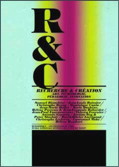 | |
| Le laboratoire de recherche en art Locus Sonus travaille depuis son lancement en 2004, à l’initiative de l’École supérieure d’Aix en Provence, sur les enjeux croisés entre audio en espace et audio en réseau. Il est porté en tant que postdiplôme par l’ESA d'Aix en Provence, l’École nationale supérieure d'art de Nice Villa Arson (puis, à présent, par l'École nationale supérieure de Bourges), auxquelles s'est associée à la rentrée 2007 et pour une année l'École supérieure des beaux-arts de Marseille. La création du laboratoire répond au cadre naissant de structuration de la recherche dans les Écoles supérieures d’art. Son objectif est d'expérimenter les aspects innovateurs et transdisciplinaires des formes et des pratiques artistiques sonores. La mise en place du laboratoire et des dialogues transdisciplinaires ont pris en compte les questions de la différenciation et de l’identification de la « recherche en art » et de la recherche sur l’art. L’originalité de la construction de Locus Sonus peut tenir en plusieurs points : l’initiation du projet par deux artistes-enseignants « en son » (Peter Sinclair et Jérôme Joy), la mutualisation de plusieurs établissements d’enseignement artistique, la volonté de fonder un lieu de spécialisation / espace de recherche dans lequel sont explorées les problématiques et les questions spécifiques des pratiques artistiques tout en constituant un corpus de connaissances et de réalisations reconnaissables dans une échelle élargie, la nécessité de favoriser les échanges avec les cycles d’enseignement, et la relation continue avec des unités de recherche scientifiques et artistiques, afin d’innerver tout un réseau d'articulations et d'interlocutions avec d'autres domaines. Ce sont, nous semble-t-il, des conditions nécessaires pour l'ouverture d'un espace commun de recherche, de débat, d'investigation, et de transmission d'états en mouvement.
[ ... → lire l'article — continue reading ... ] [ ... → lire le pdf — pdf (French version) ... ] [ ... → télécharger le pdf — pdf download (French version) ... ] |
|||
2008 |
|||
Joy J., Sinclair P. (2008). LES ESPACES SONORES EN RÉSEAU
|
lire / read |
In GlobalWare Corporation (Ed.) Roots/Routes, International Computer Music Conference ICMC’08 (Panel : « Networking Performance » ; Andrew Gerszo, Georg Hadju, Pauline Oliveros, Robert Rowe, Jonas Braasch, Chris Chafe, Pedro Rebelo, Alain Renaud, Gualterio Volpe, Winfried Ritsch, Andrea Cera, Miller Puckette, Peter Sinclair, Jerome Joy). (pp. 553-555). Belfast : SARC, Sonic Art Research Center, Queens University, & International Computer Music Association ICMA (Publishers). ISBN 0-9713192-6-X | |
Le laboratoire de recherche en art Locus Sonus travaille depuis son lancement en 2004 sur les enjeux croisés entre audio en espace et audio en réseau. Les premiers projets (Locustream, Wimicam) ont été développés et réalisés à partir d'expérimentations des techniques de streaming engageant les problématiques des pratiques des flux en espace et en réseau (local/remote, sympathies, résonances, mixed realities). Deux axes constituent notre recherche actuelle et nos réalisations artistiques en cours : Field Spatialization et Networked Sonic Spaces. Cette recherche est basée sur la création d'un corpus d'expérimentations artistiques et techniques et sur une méthodologie dirigée par la pratique (practice-led) et orientée sur la réalisation artistique publique (expérimentation contrôlée). Notre proposition s’appuie sur une mise à jour d’un champ expérimental situé aux intersections et dans les apports respectifs des domaines artistiques plastiques et musicaux.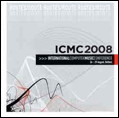 Since it was launched in 2004, the research group Locus Sonus has been working on artistic possibilities arising from the intersection of networked and acoustic or local audio spaces. The first projects, Locustream & Wimicam, were developed from experimentation using audio streaming techniques, and engage with problematic related to the use of flux for artistic purposes (flux understood here as a continually updating medium) in local and networked environments. Today our research is grouped under two main headings Field Spatialization and Networked Sonic Spaces. Our research is fundamentally practice based aiming to create a corpus of artistic experimentation around a common problematic. The forms emanating from this activity are « verified » essentially through their presentation in public contexts. The choice of implementing this research within the art education environment is prompted by the current renewal of techniques and art-forms which are at the intersection of the visual arts and music. The marriage of sound and space (sound problematized by space and visa versa) is at the heart of our research and experimentation, the main pivot of our investigations. A number of different forms are experimented within the group, ranging from concert/performance, through installation to web-based projects. The elaboration of these different types of proposition implies the development of appropriate systems for the restitution and diffusion of acoustic and electronic sound, of apparatus and devices such as instruments, computer programs, interfaces and the invention of processes, protocols and concepts. The main part of our current investigation concerns the transport of sound (and sound ambiances) which has lead to the construction of streaming systems as well as sensorial and experiential environments which favour different listening experiences, synchronous and asynchronous, local, distant, geographically identified, « autophone » and « chronotope »: the networked sonic spaces. Since it was launched in 2004, the research group Locus Sonus has been working on artistic possibilities arising from the intersection of networked and acoustic or local audio spaces. The first projects, Locustream & Wimicam, were developed from experimentation using audio streaming techniques, and engage with problematic related to the use of flux for artistic purposes (flux understood here as a continually updating medium) in local and networked environments. Today our research is grouped under two main headings Field Spatialization and Networked Sonic Spaces. Our research is fundamentally practice based aiming to create a corpus of artistic experimentation around a common problematic. The forms emanating from this activity are « verified » essentially through their presentation in public contexts. The choice of implementing this research within the art education environment is prompted by the current renewal of techniques and art-forms which are at the intersection of the visual arts and music. The marriage of sound and space (sound problematized by space and visa versa) is at the heart of our research and experimentation, the main pivot of our investigations. A number of different forms are experimented within the group, ranging from concert/performance, through installation to web-based projects. The elaboration of these different types of proposition implies the development of appropriate systems for the restitution and diffusion of acoustic and electronic sound, of apparatus and devices such as instruments, computer programs, interfaces and the invention of processes, protocols and concepts. The main part of our current investigation concerns the transport of sound (and sound ambiances) which has lead to the construction of streaming systems as well as sensorial and experiential environments which favour different listening experiences, synchronous and asynchronous, local, distant, geographically identified, « autophone » and « chronotope »: the networked sonic spaces.
[ ... → lire l'article — continue reading ... ] [ ... → lire le pdf en version anglaise — pdf (English version) ... ] [ ... → télécharger le pdf en version anglaise — pdf download (English version) ... ] [ ... → lire le pdf en version française — pdf (French version) ... ] [ ... → télécharger le pdf en version française — pdf download (French version) ... ] |
|||
2007 |
|||
Joy J., Sinclair P. (2007). LOCUS SONUS
|
lire / read |
In « Autumn Leaves — Sound and the Environment in Artistic Practice ». Edited by Angus Carlyle, CRiSAP Creative Research into SoundArt Practices, LCC, University of the Arts London, (pp. 74-77), Paris : Double-Entendre, 2007. ISBN 09548074-3-X 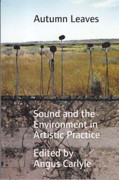 | |
| — Autumn Leaves includes essays by Bill Davies, Tobias Fischer, Steve Goodman, Tim Ingold, Helmi Jarviluoma, Rahma Khazam, Sylvain Marquis, Tom Rice, David Toop, Salome Voegelin and Hildegard Westerkamp. These essays appear alongside interviews with Peter Cusack, Max Dixon, Christina Kubisch, Alvin Lucier and Chris Watson. The artists whose work is represented in its pages include: Mira Choi, Jem Finer, Charles Fox, Dan Holdsworth, Zoe Irvine, Cathy Lane, Nicholas Gansterer, Locus Sonus, NYSAE, Aki Onda, Axel Stockburger, the students of Srishti College Bangalore, Goran Vejvoda, Claudia Wegener and John Wynne & Tim Wainwright. — The book is accompanied by a compilation of audio work presented by the German sound art label, Gruenrekorder. http://www.autumn-leaves.gruenrekorder.de/ Locus Sonus is a research group specialized in audio art. It is organized as a post-graduate course by the Art Schools of Aix-en-Provence (École Supérieure d'Art d'Aix-en-Provence) and Nice (École Nationale Supérieure d'Art Villa Arson Nice) in the south of France (and since 2010, Nice is replaced by the School of Arts Bourges). Generally speaking Locus Sonus is concerned with the innovative and transdisciplinary nature of audio art forms some of which are experimented and evaluated in a lab type context. Equally important is the collective or multi-user aspects inherent to many emerging audio practices and which necessitate working as a group. Two main thematics define our research - audio in its relation to space and networked audio systems. In the fall of 2005 the lab started work on a group project aiming to involve the various different members of the group in a way, loose enough to not stifle individual creativity, while still providing a firm basis for communal experimentation and exploration. Several interesting things have happened through the act of opening up the streaming project to other people. Apart from the fact that we have found ourselves with audio environments which we wouldn't have considered (a kitchen in Iceland, a noisy transformer in California), certain streamers have started to use the material themselves as part of their own artistic production. [ ... → soon — bientôt ... ] [ ... → pdf reading (English version) — lire le pdf en version anglaise ... ] [ ... → pdf download (English version) — télécharger le pdf en version anglaise ... ] |
|||
Continuer la liste des textes (2006-1990) / Continue texts' index (2006-1990)
Publishings/Publications : — Biblio — — 2014-2011 Texts — — 2010-2007 Texts — — 2006-1990 Texts —